#paleosuchus
Text
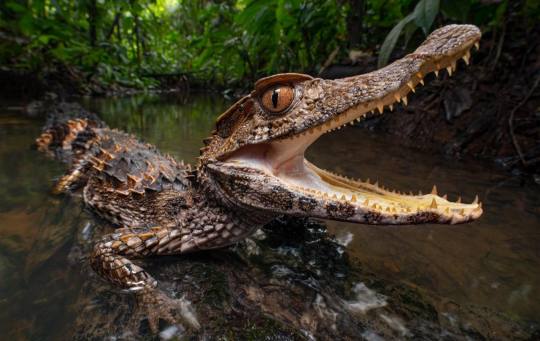
Smooth-fronted Caiman aka Schneider’s Dwarf Caiman (Paleosuchus trigonatus), family Alligatoridae, Peru
photograph by Andres Novales Aguirrezabal
#dwarf caiman#caiman#paleosuchus#alligatoridae#crocodilian#reptile#herpetology#south america#animals#nature
424 notes
·
View notes
Text

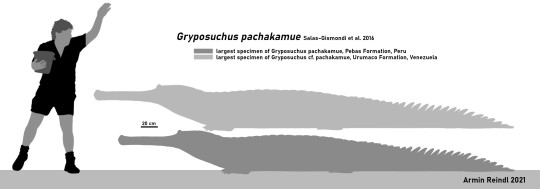


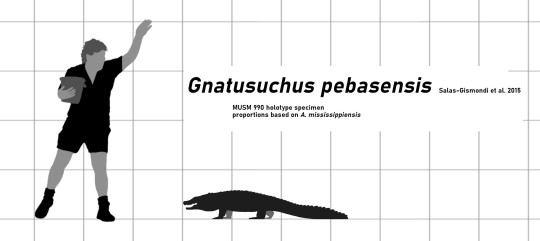


Here's a fun fact, during the early to middle Miocene the north of South America was covered by an enormous wetland system sometimes known as the Pebas Megawetlands, which was home to one of the single most-diverse collection of crocodilians in history.
Among them were a "small" species of Purussaurus that preyed on ground sloths, South American gharials, three different types of small caimans that fed on clams, a relative of todays dwarf caimans and the weird, surf-board headed Mourasuchus, all of which were recovered from a single locality.
If you wanna see more of this I highly recommend you check out @knuppitalism-with-ue stream tomorrow night, 23:00 CEST on Twitch.

#purussaurus#gryposuchus#kuttanacaiman#mourasuchus#gnatusuchus#paleosuchus#caiman#crocodilia#gharial#pebas#pebas megawetlands#paleostream#palaeoblr#prehistory#miocene
107 notes
·
View notes
Photo

Paleosuchus Palpebrosus
(Brauenglattstirnkaiman)
Die Kraft des Krokodils ist das Wasser.
- aus Afrika -
Bochum, Juni 2022
#Paleosuchus Palpebrosus#Brauenglattstirnkaiman#Kaiman#Krokodil#Alligator#Animalphotography#Tierfotografie#Tierpark#Zoo#Tierpark und Fossilium Bochum#Bochum#Tierpark Bochum#Unterwegs#NRW#Ruhrgebiet#Ruhrpott#Digitalphotography
0 notes
Text
Dreams about crocodiles
I'm used to dreaming really weird shit. Like REALLY weird.
Among all these dreams it's not uncommon for crocodiles to appear in some form or another, and while I usually don't usually remember them, some have stuck in my mind so much that I've taken them to art.

I call this one "Hold Araripesuchus gentle, as an arepa" (Arari, Arepa… get it?… nevermind).
The context and why a genus of notosuchus from the Cretaceous of Gondwana had ended up in what appeared to be a wildlife recovery center in South Africa (The environment was savannah and there were other animals such as rhinos, giraffes, zebras…) is unknown.
These little critters were running like lizards all over the place until I managed to grab one and hold it like in the picture.
I swear they looked so real that at no time did I question their existence (Although I suspect my mind used Paleosuchus to fill in the blanks and make them more believable).

The second is somewhat more recurring. In it, I work on a crocodile farm in Northern Australia.
While feeding the freshies (Crocodylus johnsoni , the Australian freshwater crocodiles) a huge male scrambles up and rips off half of my rigth hand.
Ironic that in a place with saltwater crocodiles it is a freshie who tries to kill me, but that's life I guess.
97 notes
·
View notes
Text

The extended osteoderm shield in Paleosuchus sp.: a dwarf crocodylian adaptation to the equatorial forest ecosystem?
(In french & English)
The crocodylian dwarf species (i.e., Osteolaemus sp. and Paleosuchus sp.) that live in the equatorial forests all share the peculiarity to present an osteoderm shield which extends beyond the dorsal area that lies between the skull and the caudal crest symphysis.
Here we study both the morphology and the microanatomy of the osteoderms in Paleosuchus palpebrosus (Cuvier, 1807), in order to both assess the distribution of bone ornamentation over the osteoderm shield, and to compare the porosity between the dorsal osteoderms with the non-dorsal osteoderms...
Read the paper here:
The extended osteoderm shield in Paleosuchus sp.: a dwarf crocodylian adaptation to the equatorial forest ecosystem? (mnhn.fr)
14 notes
·
View notes
Text

Grzimek's Animal Life Encyclopedia. Volume 6: Reptiles. Written by Bernard Grzimek. 1984. Illustration by Helmut Diller.
1.) Dwarf caiman (Paleosuchus palpebrosus)
2.) Chinese alligator (Alligator sinensis)
3.) Spectacled caiman (Caiman crocodilus)
4.) Black caiman (Melanosuchus niger)
5.) American alligator (Alligator mississippiensis)
#reptiles#crocodilians#caimans#dwarf caimans#spectacled caimans#black caimans#alligators#chinese alligators#american alligators#Helmut Diller
335 notes
·
View notes
Text
Korkeasaari



Keisaritamariini (Saguinus imperator) Emperor tamarin

Valkopääsaki (Pithecia pithecia) White-faced saki

Sileäotsakaimaani (Paleosuchus trigonatus) Smooth-fronted caiman
#meowth#korkeasaari#helsinki#emperor tamarin#white-faced saki#smooth-fronted caiman#pokemon#my pokemon
21 notes
·
View notes
Photo

©photography by Walter Jenkel 2023 Cuvier's dwarf caiman (Paleosuchus palpebrosus) WALTER JENKEL @WalterJenkel
#caimandecuvier #paleosuchuspalpebrosus #cuviersdwarfcaiman #walterjenkel #photography
45 notes
·
View notes
Text
12 notes
·
View notes
Text

Schneider's Dwarf Caiman (Paleosuchus trigonatus)
Photo by Janice Braud on flickr
1 note
·
View note
Text

Cuvier's Dwarf Caiman (Paleosuchus palpebrosus), family Alligatoridae, found in northern and central South America
This small caiman only grows to a length of 1.4 m (4.6 ft), on average.
photograph by Eric Gevaert
365 notes
·
View notes
Text
Croc colours and patterns
Somewhat inspired by a recent post by Joschua Knüppe, I feel like it's a good thing to remind people just how diverse colours and patterns in modern crocodilians are. When I see people make art, it often seems to stick to grey or yellowish-brown tones, which is of course not incorrect. But theres a lot of, imo, underappreciated variety still. It's also worth noting beforehand that patterns are most striking in younger individuals and naturally become more muddy the older and larger an animal becomes. But as you will see, even some decently large and old animals may maintain a striking appearance.
Take this alligator for example. Gators tend to be on the darker side, dark greys to black, sometimes countershaded and sometimes pretty consistent. Some individuals, like this one photographed by Gar Luc, still retain clearly visible stripe patterns from when they are younger.
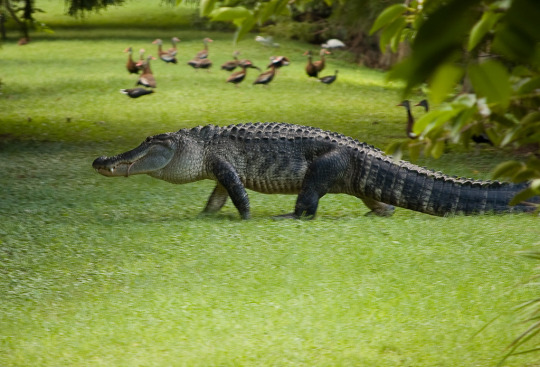
Or take one of my favourite species, the Cuban Crocodile, which can appear almost bright yellow with a dense pattern of leopard spots. Of course like with the gator you can find individuals that are much more drab, with washed out colours, but individuals with clearly defined patterns still exist.

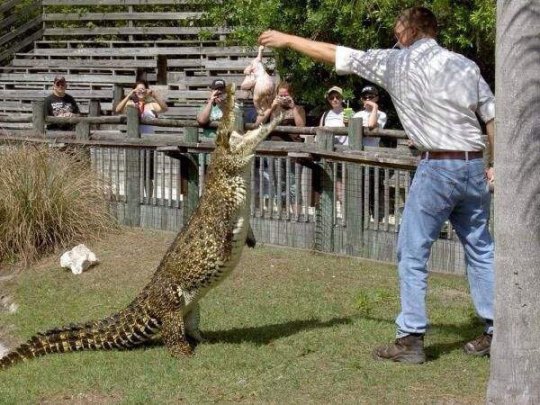
Then there's gharials of course. They can range quite a bit in colouration. They can be brown, especially younger ones and females and I've seen males range in colour from a drab grey to almost a light blue or even something that could be described as metalic black.
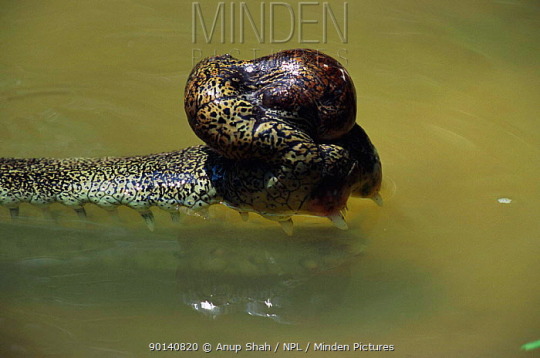


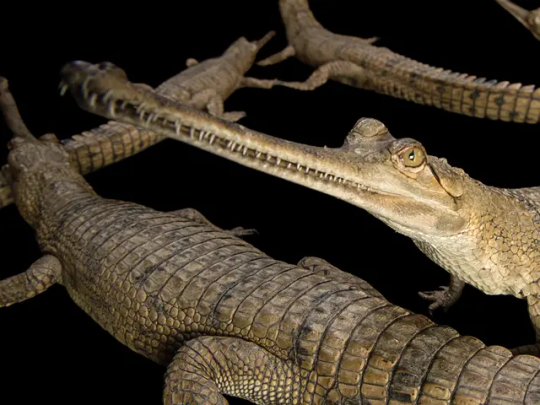
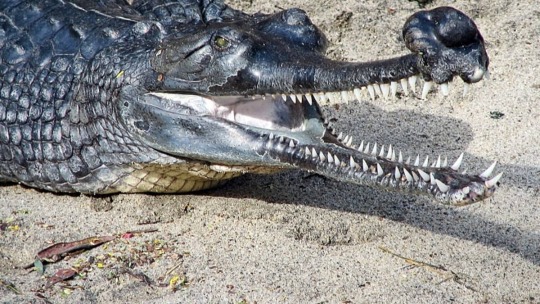
Black Caimans are also pretty interesting in my opinion and pretty easy to tell apart from other species once you pay attention to their colour. They are primarily a deep dark black of course, but what sets them apart from spectacled and other caimans is that very fine pattern of thin white stripes across the flanks that creates this beautiful contrast. They can also have patches of brown like the one on the right.


Orinocos also vary a great deal. Tho I know less about them than I wish I did, I know that individuals can range from drab brownish greys to yellow to somewhat earthy browns that almost range into reds.
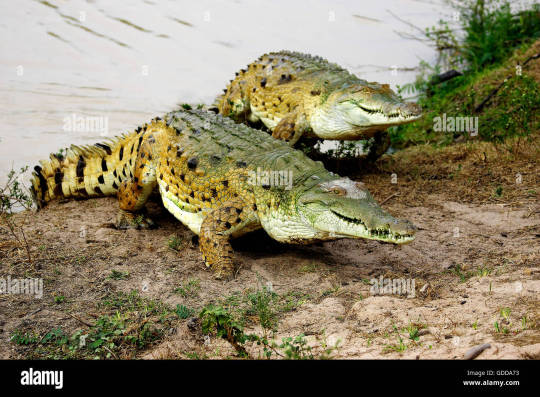
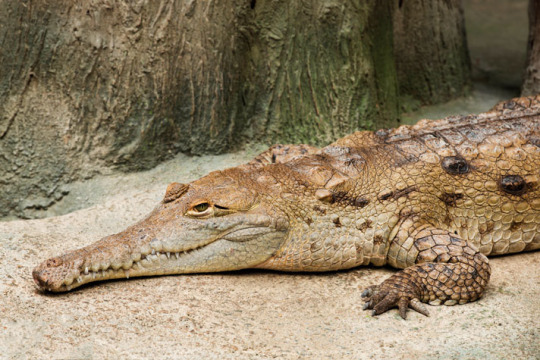
The next ones a bit of an outlier. There are specific cave dwelling dwarf crocodile populations in western Africa with striking orange colouration. Tho this one is not exactly natural pigmentation to my knowledge and instead the result of the chemicals present in the water they inhabit, brought there by bat guano. Still very pretty animals.
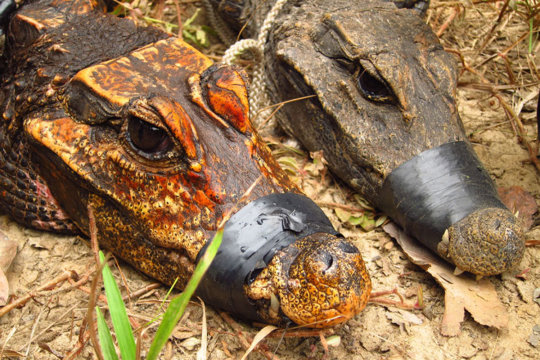
And then there's Paleosuchus, the dwarf caiman which contains two species. Again highly varied. The first image, which I believe is a Schneider's dwarf caiman, shows a very earthy brown. The others, which unless I'm mistaken are Cuvier's dwarf caimans, show colours ranging from dark with a rusty head, black to this still beautifully patterned individual. Of course these variations are also subject to change with age.



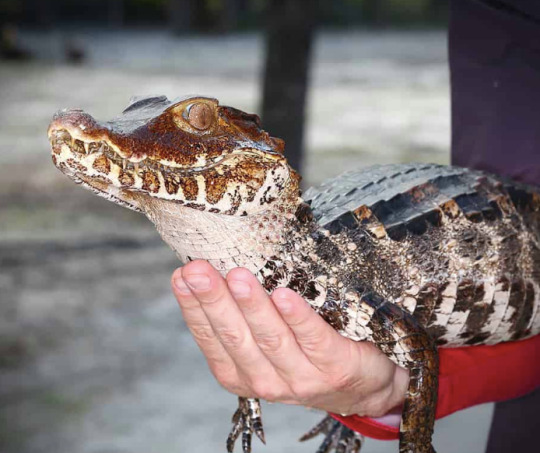
While salties aren't exactly known to be the most vibrant, I'd be remissed if I didn't mention this specific one. It's kept in a zoo in Germany and has this almost bizarre colour combination of creamy white underbelly and chocolate brown top which I've never seen in another saltwater crocodile. Photos by my friends Markus Bühler from the Bestiarium blog and René Dederich

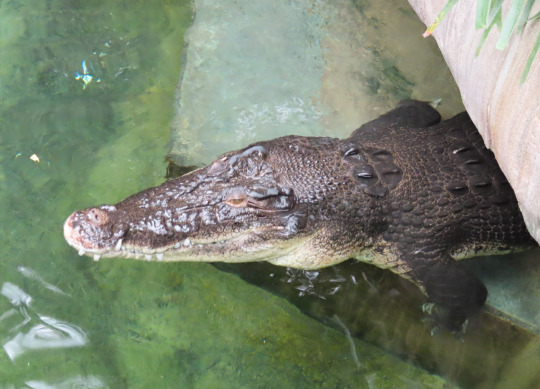
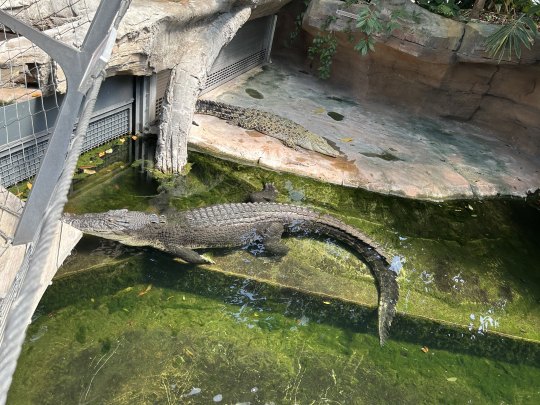
Spectacled, Broad-snouted and Yacare caimans I'll give a quick shout out. I think most people are familiar enough with how they look like and while their colours aren't anything special, I still think one should appreciate their patterns of spots and stripes and facial markings.

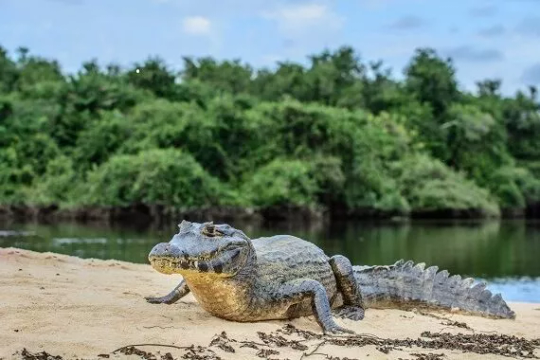


The last one I wanna highlight is the false gharial, Tomistoma, another one of my favourites. Part of the reason why being its at times beautiful reddish-brown colours.
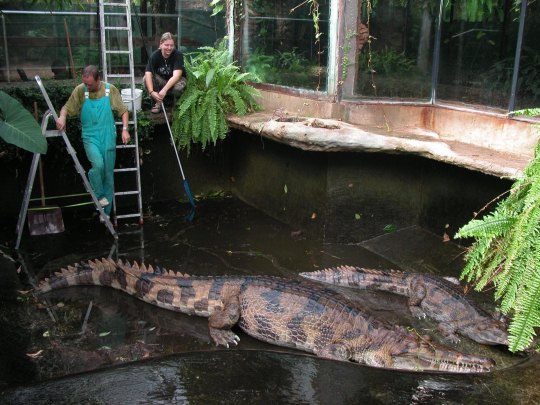
#crocodiles#crocs#gharial#gator#alligator#crocodilian#herpetology#reference#colours#inspiration#paleoart inspiration
2K notes
·
View notes
Text
O crocodilo
O crocodilo que do Nilo
Ainda apavora a cristandade
Pode ser dócil como o filho
Que chora ao ver-se desamado.
Mas nunca como ele injusto
Que se ergue hediondo de manhã
E vai e espeta um grampo justo
No umbigo de sua própria mãe.
O crocodilo espreita a garça
Sim, mas por fome, e se restringe
Mas e o filho, que à pobre ave
Acompanha no Y do estilingue?
A lama pode ser um berço
Para um crocodiliano
No entanto o filho come o esterco
Apenas porque a mãe diz não.
Tem o crocodilo um amigo
Num pássaro que lhe palita
Os dentes e o alerta ao perigo:
Mas no filho, quem acredita?
O filho sai e esquece a mãe
E insulta o outro e o outro o insulta
É ver o simples caimão
Que nunca diz: filho da puta!
O crocodilo tem um sestro
De cio: guia-se pelo olfato
Mas o filho pratica o incesto
Absolutamente ipso-facto.
Chamam ao pequeno crocodilo
Paleosuchus palpebrosus
Porém o que me admira é o filho
Que vive em pálpebras de ócio.
O filho é um monstro. E uma vos digo
Ainda por píssico me tomem:
Nunca verei um crocodilo
Chorando lágrimas de homem.
Vinicius de Moraes
0 notes
Note
Do you have a favourite type of crocodilian? I think mine are caiman (travel sized croc)
It's a difficult question jajaja, but I have a very clear answer.
My favorite species is the Caimán llanero/Cocodrilo del Orinoco (Crocodylus intermedius), it really seems to me the most beautiful species of crocodylian and sadly critically endangered due to multiple factors. My biggest goal in life is to work in its conservation (Due to personal/family ties I have a very close relationship with Venezuela and most probably I´ll end up living there in the future).

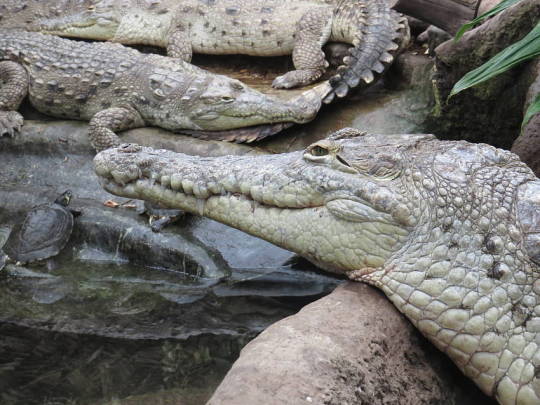
If I had to choose another one it would probably be Crocodylus johnsoni (because they are very similar to orinocos but smaller) or Paleosuchus trigonatus (They have a unique facial morphology, very dragon-like).

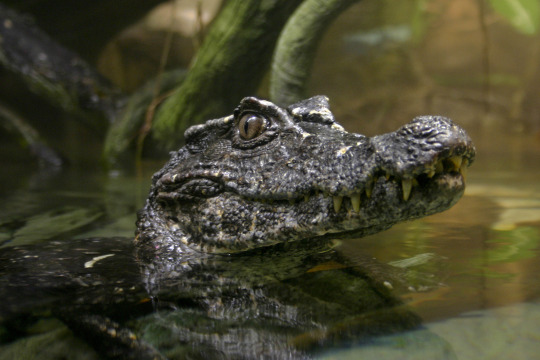
54 notes
·
View notes
Photo

Underwater photo I took of a dwarf caiman in the Peruvian Amazon. For this shot I had my camera in a @realoutex camera housing and my flash underwater wrapped in 3 ziplock sandwich bags 😂. You can see all the particulates in the water, very murky out here! I’ll include some info from my last caiman post- The dwarf caiman is a fascinating little crocodilian found in South America. I have not seen many underwater photos of them in the wild and I am pretty happy with my shots I took on my last Peruvian Amazon expedition, what do you think?? As their name implies, dwarf caiman are relatively small, this one was just over 3ft long. What they lack in size they make up for in attitude! I have caught many of these caiman in South America, and even one in the wild in the everglades(introduced), and they are usually very fierce, lightning fast, and snappy! This one was the most calm individual I have ever seen though, very placid and allowed for many photos! I’ll be posting many photos of this individual! As I say about alligators, I am adamant that no crocodilian should be kept as a “pet”, even the dwarf species. It’s just not fair to the animals. If you want to join me on next year’s expedition, shoot an email to [email protected] for trip info. @mtamazontours Photographed with a Canon 90D and Tokina 10-17mm lens and @realoutex underwater housing! #caiman #dwarfcaiman #paleosuchustrigonatus #paleosuchus #peru #amazon #rainforest #animals #jungle https://www.instagram.com/p/CWy0fo-vcpo/?utm_medium=tumblr
1 note
·
View note
Text
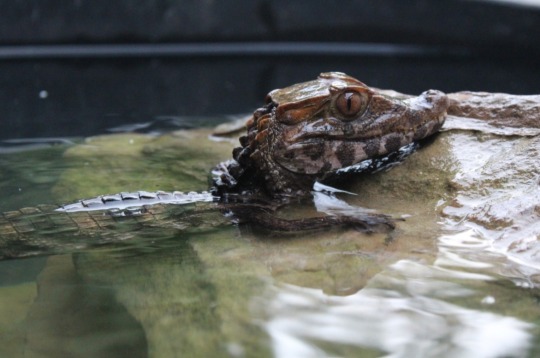
Smooth Front Dwarf Caiman by Land to Sea Exotics
2 notes
·
View notes